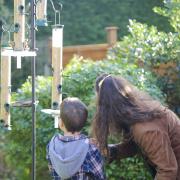Every year the Summer Solstice takes place across the Northern Hemisphere in June.
It marks the one day of the year which has more sunlight than any other.
The solstice is a key event in the lunar calendar for many, with some seeing it mark the official start of the summer season.
As stated on the Royal Museums Greenwich website, while most people consider the Summer Solstice to be a day, it is in reality an exact moment in time that falls upon that day.
This moment comes when whichever hemisphere you're in is most tilted towards the Sun.

When is the Summer Solstice 2023 UK?
This year the Summer Solstice will take place on Wednesday, June 21 at 3.58pm, according to Royal Museums Greenwich.
READ MORE: 14 pretty places to watch the summer solstice sunrise in England
Why do solstices happen?
Solstices occur due to the Earth rotating on its axis, producing the day and night cycle, whilst it also orbits around the Sun.
Royal Museums Greenwich states: "However, the axis of rotation of the Earth is not lined up with the axis of motion around the Sun. Instead, it is tilted slightly at 23.44°.1.
"This tilt means that during one half of the year the North side of the Earth is tilted slightly towards the Sun and the South is tilted away. For the other half of the year the reverse is true.
"At the exact moment that the northern hemisphere is most tilted towards the Sun, the northern hemisphere experiences its summer solstice. The southern hemisphere, by contrast, has its winter solstice."



























